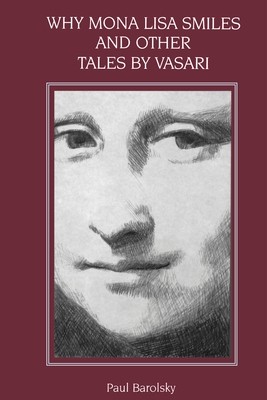
- We will send in 10–14 business days.
- Author: Paul Barolsky
- Publisher: Penn State University Press
- ISBN-10: 0271026154
- ISBN-13: 9780271026152
- Format: 17 x 21.7 x 1 cm, softcover
- Language: English
- SAVE -10% with code: EXTRA
Reviews
Description
Art history as we know it would not exist without Vasari, and Barolsky shows us that something of the same claim should be made for literary history. He demonstrates the ways in which a literary approach to Vasari's book deepens our understanding of its historical, art-historical, and imaginative character. Why Mona Lisa Smiles discusses Vasari's shrewd, witty, intimate awareness of Dante, Petrarch, and Boccaccio and relates the Lives to the works of Castiglione, Aretino, Cellini, and Rabelais. Barolsky reveals the unexpected fantasy of Vasari, who imagined and then invented artists and works of art, totally fabricating the lives of artists about whom he knew little or nothing. Barolsky traces the myth of Pygmalion through the Lives, demonstrating that Vasari was himself a Pygmalion in words and showing how he wittily played on the names of artists, revealing these poetical fantasies as part of the very iconography of Renaissance art. By approaching the Lives as a combination of genres--biography, history, novella, autobiography, novel, and literary banquet--Barolsky connects Vasari's highly fictionalized history to the modern historical novel. The fictional character of Vasari's book should not be ignored or dismissed by art historians, Barolsky insists, since it is itself a historical document--the record of how a painter and writer of extraordinary sensibility beheld works of art at a particular moment in history. Barolsky's unique approach to the Lives makes this study a valuable contribution to the history of the reception of art.
EXTRA 10 % discount with code: EXTRA
The promotion ends in 17d.14:14:23
The discount code is valid when purchasing from 10 €. Discounts do not stack.
- Author: Paul Barolsky
- Publisher: Penn State University Press
- ISBN-10: 0271026154
- ISBN-13: 9780271026152
- Format: 17 x 21.7 x 1 cm, softcover
- Language: English English
Art history as we know it would not exist without Vasari, and Barolsky shows us that something of the same claim should be made for literary history. He demonstrates the ways in which a literary approach to Vasari's book deepens our understanding of its historical, art-historical, and imaginative character. Why Mona Lisa Smiles discusses Vasari's shrewd, witty, intimate awareness of Dante, Petrarch, and Boccaccio and relates the Lives to the works of Castiglione, Aretino, Cellini, and Rabelais. Barolsky reveals the unexpected fantasy of Vasari, who imagined and then invented artists and works of art, totally fabricating the lives of artists about whom he knew little or nothing. Barolsky traces the myth of Pygmalion through the Lives, demonstrating that Vasari was himself a Pygmalion in words and showing how he wittily played on the names of artists, revealing these poetical fantasies as part of the very iconography of Renaissance art. By approaching the Lives as a combination of genres--biography, history, novella, autobiography, novel, and literary banquet--Barolsky connects Vasari's highly fictionalized history to the modern historical novel. The fictional character of Vasari's book should not be ignored or dismissed by art historians, Barolsky insists, since it is itself a historical document--the record of how a painter and writer of extraordinary sensibility beheld works of art at a particular moment in history. Barolsky's unique approach to the Lives makes this study a valuable contribution to the history of the reception of art.


Reviews